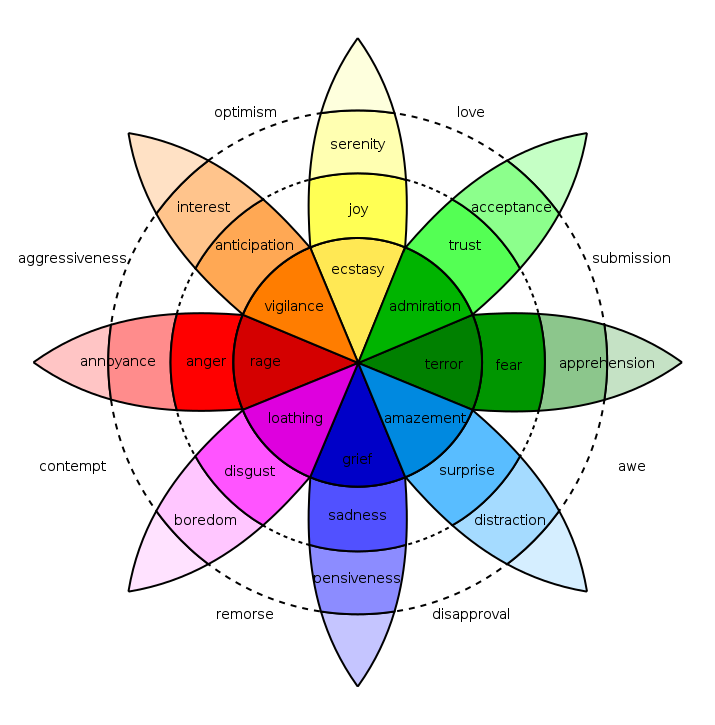
There is no denying emotions are an important part of any experience. But they’re complex, personal, and fickle things, fundamentally difficult to direct or control. Is happy even the ideal emotion for your customers to feel? How can you trigger certain emotions or design experiences with your customer’s feelings in mind? In this article, we’ll discuss what emotions are, how they’re an essential part of Customer Experience, and how you can integrate them into your CX. That way you’ll be able to create more human, memorable experiences for your customers.
What are emotions?
This might seem pretty obvious, after all, you likely experience emotions daily. But defining emotions is actually quite complex. Luckily we don’t need to phrase an exact definition for this article, so we’ll provide you with two descriptions.
A more practical description: ‘A conscious mental reaction (such as anger or fear) subjectively experienced as strong feeling, usually directed toward a specific object and typically accompanied by physiological and behavioral changes in the body.’
And a slightly more poetic one: ‘The description of intangible human feelings, the powerful internal sensations that color our every experience.’
These already indicate a strong connection to Customer Experience, but why exactly are these tricky emotions something you should keep in mind when it comes to CX?
Why are emotions important in Customer Experience?
Based on the two descriptions, emotions are clearly subjective and can influence behavior and the way experiences are shaped. This is precisely why they’re important: they form a deeply personal, feelings-based component of CX. This emotional component might be even more influential than the rational one: studies indicate we evaluate brands based mostly on feelings and personal experiences, not information.
When looking at Pine and Gilmore’s Experience Economy, it becomes clear it can be hard to differentiate your business with high-quality commodities, products, and services. Customers have come to expect high quality, no matter the product or service. Since it has become easier for customers to compare different organisations and what they have to offer, they don’t have to settle based on quality.
Integrating emotions in your Customer Journey can give you some competitive edge, as many studies have indicated emotional experiences are more likely to be remembered (and in greater detail too!). But how can you actually incorporate emotions into your customer’s experiences?
Incorporating emotions into Customer Experience
You can create an emotion curve to include in your Customer Journey map, by adding emotions to different Episodes in the journey. You can also include emotions at Touchpoint level. An emotion curve is a great addition to the visualization of a Customer Journey because it provides an overview of the highs and lows of the experience. This allows you to empathize with your customers in a simple way.
By adding emotions, it becomes easier to tell your customers’ stories. Including emotions in storytelling provides important context for the way your customers experience your organisation. It is also an easy way to get the conversation going on the current state of your CX and where you’d like it to be. To do this, it can be helpful to add two different emotion curves: one depicting the current state and one with the desired emotions.
At Milkymap, we like to use Plutchik’s wheel of emotions. Having a set of specific emotions to choose from provides users with some structure. It’s also easier to compare emotions across maps from different users, especially if you make some effort to discuss their meaning before you start mapping.

Even after reading about the added value of adding emotions to the Customer Journey, like storytelling and becoming more memorable for your customers, it probably shouldn’t be your aim to try and orchestrate specific emotions in specific Episodes and Touchpoints within a journey. Not only because emotions are extremely personal, but also because they are often strongly influenced by many things outside of the control of you and your organisation.
Triggering specific emotions at specific times shouldn’t be your main goal, but you can design CX with your customers’ emotions in mind. We believe there are two important theories you can use to integrate emotions into your Customer Journey. Keeping the peak-end rule and the pain-pleasure gap in mind.
Peak-End Rule & the Pain-Pleasure Gap
The peak-end rule is a shortcut in the way humans process information, first described in research by Daniel Kahnemann and Barbara Fredrickson. Instead of judging the experience based on the sum of all the moments that made up the experience, people base their judgments mostly on the way they experienced the peak (the most intense moment) and the end of the experience. The information from the other moments isn’t forgotten, it’s simply not used when judging the experience.
An extension of this peak-end rule theory is the pain-pleasure gap. Sampson Lee described this in his article Pain is Good, suggesting negative moments in an experience are important to be memorable for your customer.
This might sound counterintuitive, as we all want happy customers. But creating a completely positive experience can cost a lot of time and resources. An overall positive experience can also become a ‘flat’ experience, without any peaks, making it less memorable. It can therefore be a strategic choice to create some small negative or (a little safer), neutral moments in a Customer Journey. Letting customers experience a need for a little while longer can make the solution seem even sweeter afterward.
Tips
We’re aware this is a lot of information and it can seem difficult to translate into something practical. A little list of things you can implement tomorrow:
- Make sure your Customer Journey has a clear ending, and make sure it’s a positive one. The last event in a journey is very memorable, by making this event positive you have a nice association that sticks to your brand.
- Personalize the experience for different users when possible. Emotions are subjective, not every customer will have the same reaction to different events or touchpoints in the journey.
- Leave some pleasant surprises in the experience. Clear expectations are great and can be very helpful to customers. But allowing them to find a small extra feature or some fun treat provides you with a way to surpass customer expectations. Easter eggs can be a fun way to do this.
We hope this article has helped shed some light on the complex topic of emotions and has gotten you excited about including them in CX. As always, make sure to keep your customer in mind when using emotions in your experience design. A small step or a giant leap, make sure the next improvement you make in CX is noticeably adding value for your customers.
If you do need some help integrating emotions into your Customer Experience, just get in touch. We’re happy to discuss our vision on emotions and can also show you how the Milkymap platform can help you include that important emotional aspect in your Customer Journeys.
